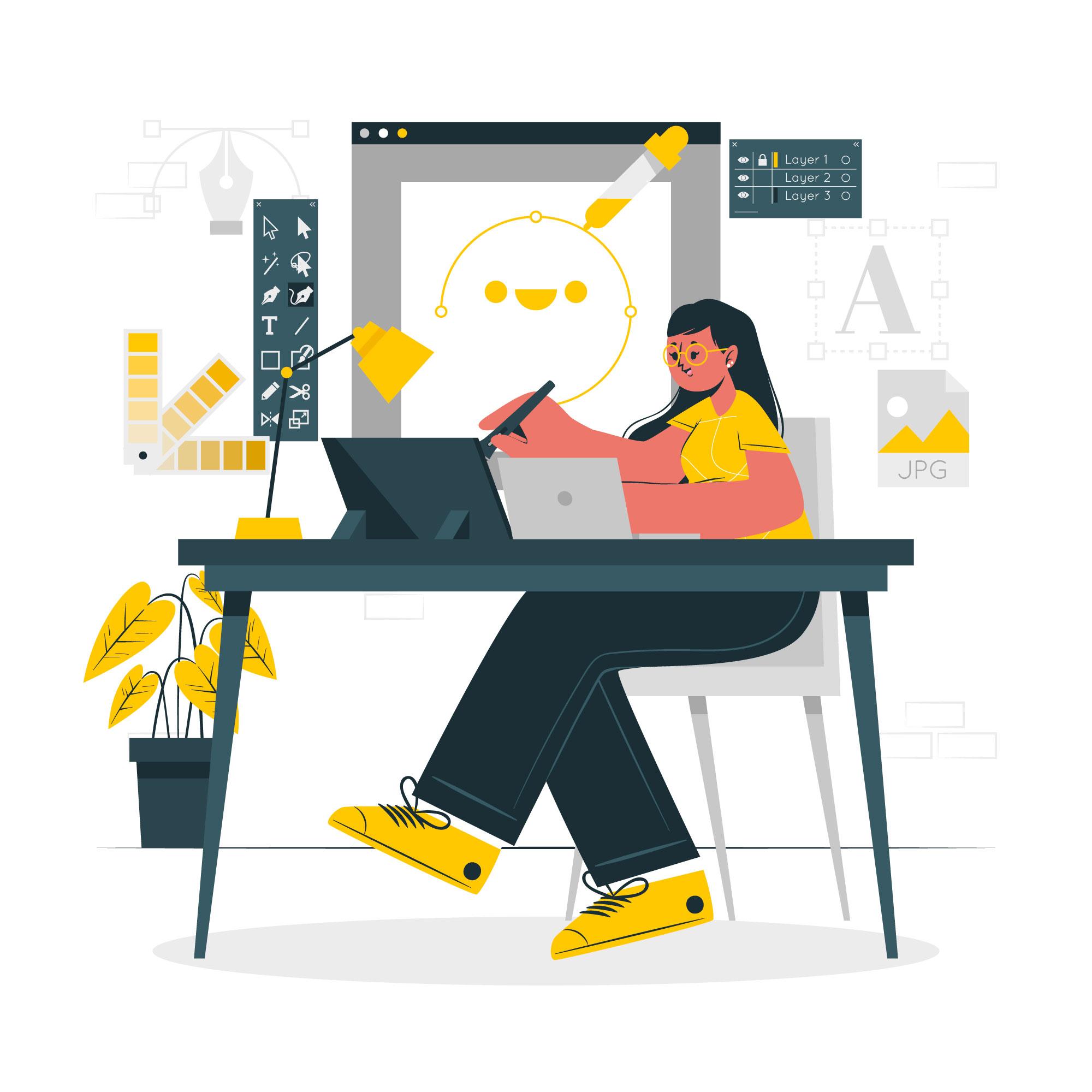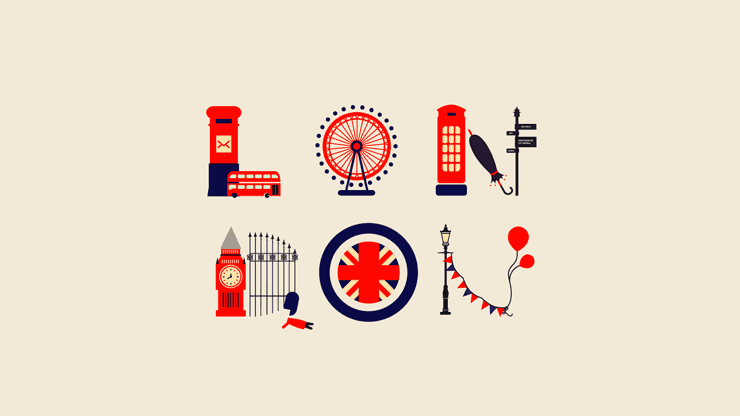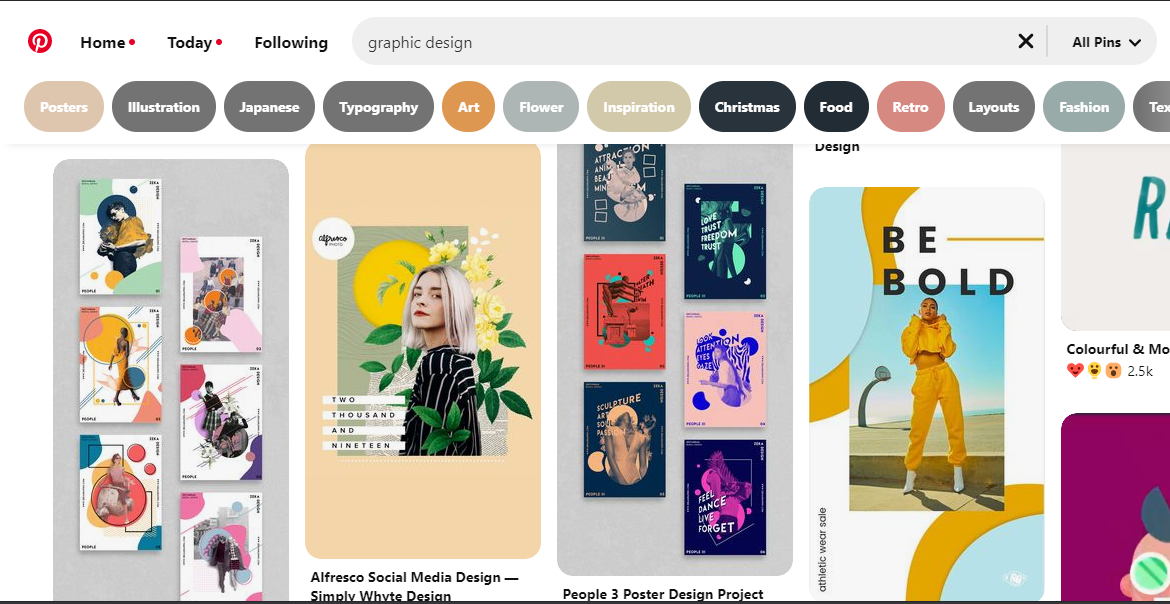Careers in graphic design in India for the creative genius in you

Do you often find yourself lost in the black holes of Instagram, Pinterest, and Behance? Is color theory your favourite theory of all time? Do you believe an idea in the form of a graphic can affect a brand’s identity? Then, it might be time for you to take the plunge to become a graphic designer, and we are here to lend you a helping hand with the same. In this post, we will cover the different types of graphic design careers and the courses you can take to become one.
What are the types of graphic design jobs?
Graphic design jobs are everywhere, from tech companies to publication houses to clothing stores. Besides taking you places, the graphic design career path offers you opportunities for financial growth and rewarding work.
Here we have created a graphic design careers list of the 9 most common roles in the field:
1. Web designer
If designing the look and feel of websites sounds uber cool to you and you don’t mind picking up basic coding skills, then web design can be right up your alley.
Web designers are responsible for designing the layout, fonts, colors, dropdowns, and icons of web pages or a complete website. They are also responsible for creating a responsive design, which changes across different devices. Although they may or may not code, they are expected to have an understanding of HTML and CSS, and numerous jobs list them as a requirement.
2. Motion graphic designer
Motion designers work on bringing graphics such as text and shapes to life through animation. While animation needs to tell a story, motion graphics are focussed on giving a graphic some movement and do not follow a narrative. Their basic purpose is to simplify a complex idea through the use of graphics. Common examples include logos and promotional videos.
 Image credits: https://abigail.kim/
Image credits: https://abigail.kim/
3. UI designer
Don’t you just love it when a website is visually appealing and you easily understand how it works?
A UI designer, along with the UX designer, is responsible for making interfaces such as websites and apps user-friendly. A user interface professional is concerned with the way users interact with the visual aspect of these interfaces. This includes having an understanding of how the user will move from one place to another. They visualise the screens for each step and make sure that the process feels intuitive rather than needing effort.
Because the work of a UI designer overlaps with that of a web designer, these titles could be used interchangeably by employers.
 UI design of Pinterest
UI design of Pinterest
4. Book cover designer
When was the last time that you didn’t judge a book by its cover? If you can’t remember such a time, you know just how crucial book covers are for sales! If you pore over every last detail of a cover, then this could be your calling. In addition to ideating and creating book design covers, you can be responsible for creating book layouts.
5. Graphic design for marketing or advertising
If you are all about using your creative prowess to create a brand’s voice and perception, then you can do well in the marketing or advertising sphere. You can work on email marketing templates, newsletters, infographics, and different types of advertisements for various platforms such as social media or TV. Because design and marketing are intricately linked, you can work in a number of industries.
6. Logo designer
Often when one thinks of a company, the first thing that pops into our minds is its logo. For example, if we think about Amazon, its logo is one of the first few things that we recall. The smile that starts underneath ‘a’ and ends at ‘z’ signifies Amazon’s promise of customer satisfaction as well as the ability to deliver everything from A – Z.
If you think you have a knack for coming up with out-of-the-box ideas that can create brand recognition, logo designing can be worth a shot.
7. Video editor
Video editing involves weaving a narrative through a video. It includes creating scripts and storyboards, editing photos and videos, and using the right music or audio. Adobe Premiere Pro, After Effects, and Photoshop are commonly-used software in a video editor’s toolkit.
8. Professor
Would you love to pass on what you have learned and help people advance their love for graphic design? Then, a teaching job may fit the bill! However, you may need some industrial experience under the belt to apply.
9. Video game designer
Graphic designers in the video game industry can work on the marketing campaigns, usability of interface, and game design. Game design can be a bit difficult to break into without a know-how of 3D design, but you can surely develop your skills overtime to be more involved in the field.
Aside from strictly graphic design jobs, you may also explore related creative careers such as:
10. Packaging designer
Imagine you are at a supermarket where you’re spoilt for options for pasta. Which one are you likely to pick up first? The one with the most appealing packaging! If you believe that love at first with a product can happen with the right packaging, you could surely try your hands at package designing.
A packaging designer makes sure that the product is sold in the right packaging, which is appealing, informative, and useful. For example, if you are going to ship a product that could break, the packaging should be sturdy.
The exterior of the product should clearly convey who the intended user is and how they can use it. So, the graphic designer should have a good understanding of the ideal audience and should be able to use the right colors, typography, and packaging material for the product.
If designing the look and feel of websites sounds uber cool to you and you don’t mind picking up basic coding skills, then web design can be right up your alley.
Web designers are responsible for designing the layout, fonts, colors, dropdowns, and icons of web pages or a complete website. They are also responsible for creating a responsive design, which changes across different devices. Although they may or may not code, they are expected to have an understanding of HTML and CSS, and numerous jobs list them as a requirement.
11. Production artist
If the design has been conceptualized by another designer, it is the production artist who brings out the final product. This process can involve bringing it out for different mediums, such as brochures, ads, email campaigns, etc.
Production artists are majorly involved in the technical aspect of designing and should be proficient in the use of softwares such as Adobe Photoshop, Illustrator, and InDesign.
12. Publication designer
Graphic design is a key part of the publishing industry, be it print or web-based. If your eyes always gleam while flipping through a magazine, then maybe it’s time you start creating some of these graphics yourself! Alternatively, you can also work with a newspaper publication.
13. Apparel designer
You could also venture into the fashion industry where graphic designers work on the design of clothes. For instance, graphic t-shirts use visuals that are created by graphic designers and printed on a tee.
14. Art director
Art directors are professionals who spend the majority of their time managing a team of designers. More than being involved in designing themselves, they are responsible for making sure that that idea is executed smoothly. While many graphic designers step into this position after years of experience, an art director could also belong to other fields such as marketing.
You could pursue the above-mentioned graphic design roles as part of an agency where you work for different clients, an in-house business that creates their own product(s), or as a freelancer. A freelancing stint can help you in exploring different areas of work before settling into one or maybe can offer a way out of a role that you don’t like.
Now that you know about the career opportunities in graphic design, let’s find out how you can get started.
How can you learn graphic design?
1. Graphic design degrees: You can take the traditional route and pursue a B.Des in Graphic Design or a diploma. These degrees will help you build a strong foundation in design thinking and teach you the timeless concepts of design. However, if formal education isn’t your cup of tea, then fret not! You can teach yourself through the different online resources.
2. Online courses: If you are getting your feet wet, you can begin with a beginner-friendly training such as Internshala’s Graphic Design training. You can follow it up with more advanced courses.
3. Portfolio: Regardless of which education model you choose, remember to take up personal projects to learn more about graphic design. A strong portfolio gives the impression that you are prepared for the real world projects that employers expect you to take on.
4. Internships: Doing internships will not only help you gain practical knowledge but also come in handy when the ‘entry-level’ graphic design jobs demand 1-2 years of experience. Check out these graphic design internships to see the opportunities that await your creativity!
5. Continuous learning: Part of what makes graphic design exciting is the lifelong learning that comes with it. No one can claim to be a know-it-all!
6. Books: If you like reading, then you are in for a treat with the sheer number of good design books you can get your hands on! If you don’t like reading, you should still check out a few favourites from the community such as Logo Modernism, Why Fonts Matter, Designing Brand Identity, Grid Systems in Graphic Design, and Interaction of Color.
7. Blogs: Blogs can be your go-to resource for keeping up with the industry trends, seeking creative inspiration, and career advice from seasoned graphic design professionals. You can check out Creative Bloq, Adobe Creative Cloud, Dribbble, Typeroom, Abduzeedo and AIGA.
If you are excited to get started, then check out Internshala’s Graphic Design training. You can use coupon code BLOG10 to get a discount of 10%.
Image credits: <a href=”https://www.freepik.com/vectors/design”>Design vector created by stories – www.freepik.com</a>



